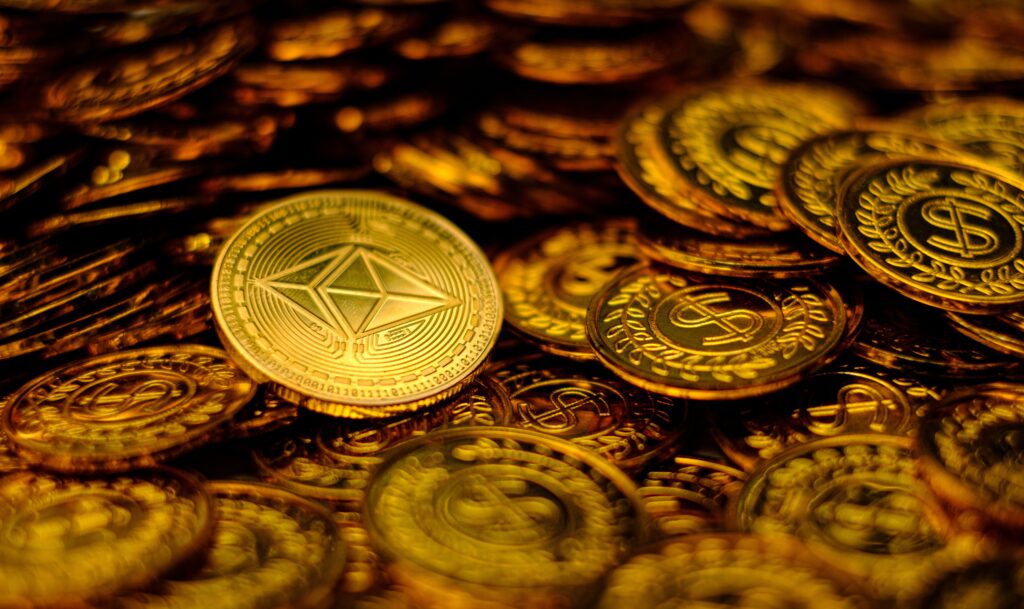The second largest cryptocurrency with a market cap of $222.88B ETH is currently trading at $1,852, down 2.7% in the past 24 hours while managing $9.8 bln in trading volume, according to CoinGecko.
These losses came over the weekend as the news of the Ethereum Foundation transferring nearly $30 million in Ether to the cryptocurrency exchange Kraken caused jitters in the market about a potential selloff event.
This resulted in a drop of about 7.5% from over $2,000 during this period. The crypto asset is down 30% in the past year and 62% from its all-time high (ATH) of $4,880 in late 2021.
ETH is still up 54.5% in 2023, with the 50-day exponential moving average (EMA) near $1,850, capping Ether’s downside attempts this year. Above this red wave, ETH price can pursue a breakout upwards of $2,000 while a drop below could see support near $1,700.
While an increase in exchange balance due to Ethereum Foundation’s $30 million transfer to Kraken suggests a rise in potential selling pressure rising, Ethereum’s balance remains lower across all the exchanges.
According to the blockchain analytics platform Santiment, spikes in active Ethereum deposits often foreshadow volatility in the price of ETH.
Interestingly, Ethereum Foundation’s last significant transfer was 20,000 ETH in November 2021, when the price peaked and declined by 80%. Before that, in May 2021, the foundation sold 35,053 ETH at a local top of around $3,500.
While ETH prices are impacted negatively by the Ethereum Foundation’s sales amidst the U.S. banking crisis and whether this will force the Federal Reserve to stop hiking and cut interest rates, the biggest factor contributing to ETH network activity lately has been meme coins.
Memecoin Mania is Back

Last week, the price of Ether jumped as investors gambled on crypto’s newest meme coins. Cryptocurrencies rallied to mark a green start to the year but have largely seen low volatility. Following the collapse of FTX late last year, investors have been sitting on the sidelines in stablecoins.
However, market participants have been trying to bring meme mania back to crypto in the past couple of weeks. Meme coins don’t have any fundamentals and are driven by hype and social media.
“One of the main reasons ETH is up … is down to a resurgence of memecoins,” said Conor Ryder, research analyst at crypto data provider Kaiko. “Whatever your thoughts on memecoins, the facts are they drive users to transact on Ethereum, which helps the network earn more fees. Ethereum gas fees have been revived by the return of memecoins, just today hitting 1-year highs.”
The frog-themed token pepecoin (PEPE) was at the front of this meme coin frenzy. As investors and enthusiasts scramble to get their hands on the memecoin, Pepe secured a spot among the top 50 coins by market cap, surpassing the billion-dollar milestone in a matter of 20 days.
During this period, the price of PEPE — which has a total and circulating supply of 420,690,000,000,000 tokens — surged 4,041% to a peak of $0.00000431 on May 5. The meme coin is currently down 47% from its ATH.
But this didn’t stop at just PEPE. Following its success, many copycats emerged to capture this mania, representing different internet memes. The most active smart contracts on Ethereum are currently Uniswap trading pools for meme coins such as TURBO, BOB, and TRBNR, SPONGE, as per data from crypto analytics firm Nansen.
Frenzied activity in other smaller coins saw coins like DINO soaring 500% in two weeks, while CHAD, 4TOKEN, and WOJAK rallied 450%, 250%, and 150%,
respectively, in one week.
Big Spike in Fees

Amidst the memecoin mania, active deposits on the Ethereum network climbed to an 18-month high, exceeding 20,000 deposits. This marks the highest level increase since Nov. 2021.
According to Santiment, meme token traders looking to cash out their profits may be behind this increased activity. This can be seen in the trajectory of active ETH deposits that started climbing at the beginning of May, coinciding with the opening of meme coin season.
Since its launch last month, over 410,000 PEPE transactions have been completed on the Ethereum-based DEX Uniswap. The pepecoin frenzy led Uniswap’s pepecoin-wrapped ether (PEPE-WETH) liquidity pools to become the most active liquidity pool by the number of transactions.
At one point last week, trading volumes for PEPE on Uniswap surpassed the volumes of Tether (USDT) and Wrapped Bitcoin (WBTC), which are some of the highest-volume tokens on the exchange.
As a Twitter user calculated, these transactions have burned more than 5,300 ETH worth $10 mln in gas fees. The number of gas fees burned by PEPE transactions picked up pace this month, in close connection with Ethereum deposits.
Since May 1, the ERC-20 meme token has also been listed on leading crypto exchanges Binance and KuCoin, further fueling the PEPE mania. This can result in burning even more gas in the coming days, even if the coin can’t sustain its heady gains.
One major disadvantage of this spike in activity on the Ethereum network is its immediate effect on gas fees. According to one gas fee price tracker on Dune, the daily median gas price has been trending upward since the end of April, going well past 150 gwei on May 5, up from 20 gwei a month ago.
The transaction cost hit a 12-month high and has increased more than 50% since the launch of the PEPE token on April 18. Average gas fees also briefly topped 240 gwei on Friday, their highest level since last May.
In terms of dollars, the average cost of a single transaction on Ethereum jumped to nearly $16 last week. While mean transaction fees on Ethereum have jumped to much higher levels during the 2021 bull market, things have been quiet since the market crashed in May 2022.
Pushing ETH Further Deflationary

The rise in Ethereum’s transaction fees wasn’t limited to Layer-1 but also led to a rise in gas fees for Layer-2 transactions. The gas fees on Layer-2 networks surged along with Ethereum mainnet fees because related data for Layer-2 transactions are also posted on the Layer-1 blockchain for security.
Optimistic and Zero-knowledge proofs are two kinds of Layer-2 scaling solutions, and both use another technology called rollups to scale transactions. Rollups involve batching transactions off-chain into a single, smaller transaction which are later settled on the mainnet.
Notably, zero-knowledge proof-based rollups were hit relatively worse than optimistic rollups, with the fees for swapping tokens on ZK-based scaling solutions like zkSync Era mainnet, Polygon zkEVM, and Starknet rising between $2 to $11.
According to L2 Fees, the gas fees for sending ETH on the two most popular ETH L2s Arbitrum One and Optimism, both of which are Optimistic rollup solutions, meanwhile is $0.74 and $0.95 for swapping tokens, which is about 10x higher than the mean value.
“There’s a ton of memecoin activity on chain right now that’s generating a lot of gas fees” and “pushing ETH further deflationary,” meaning instead of increasing, its supply is decreasing, said Michael Rinko, a research analyst at Delphi Digital.
However, these increased gas fees resulted in 74,253 ETH being burned in the past week. This burn is the result of a hard fork that Ethereum executed in 2021, which meant that a portion of all Ethereum transactions was destroyed. As activity on Ethereum increases, so does the number of ETH destroyed.
While all this action represents strong demand for the Ethereum network, as Ethereum becomes costlier to use, it prices out small investors and traders.
Driving Demand

It’s not just Ethereum, though, but memecoins are also impacting Bitcoin as they transition to the BRC-20 standard, according to network metrics.
With Ethereum witnessing congestion, people started minting meme coins using the BRC-20 standard. This resulted in daily minting fees on BRC-20 reaching a record high of 247 BTC and the transaction fees on Bitcoin increasing 18-fold from a month ago to surpass 400 BTC on May 7, as per Dune Analytics.
The popularity of BRC-20 tokens continues to grow, with their market cap reaching $541 million so far. Currently, there are more than 14k such tokens, many of which are memecoins.
This led to Binance halting BTC withdrawals twice in 12 hours because of a large volume of pending transactions. Memecoins affecting the world’s biggest decentralised crypto exchange prove that meme coin mania is very well alive and thriving.
But, of course, this frenzy is much stronger and bigger on Ethereum as crypto analytics firm CoinMetrics stated in a weekly note, as Bitcoin “births a nascent memecoin scene, the ETH ecosystem continues to crank out multi-million dollar altcoins.”
The resurgence of memecoins is positively impacting the Ethereum network. While opinions may differ on the value and longevity of these coins, there is no denying their ability to drive transaction volume on the Ethereum blockchain, leading to increased fee revenue for miners and validators.
The recent surge in Ethereum gas fees clearly indicates the network’s vitality. Not to mention, this will lead to an increase in the ETH burn, and as Ryan said, “at current activity levels, ETH is a deflationary asset, which should help boost ETH’s price.”









